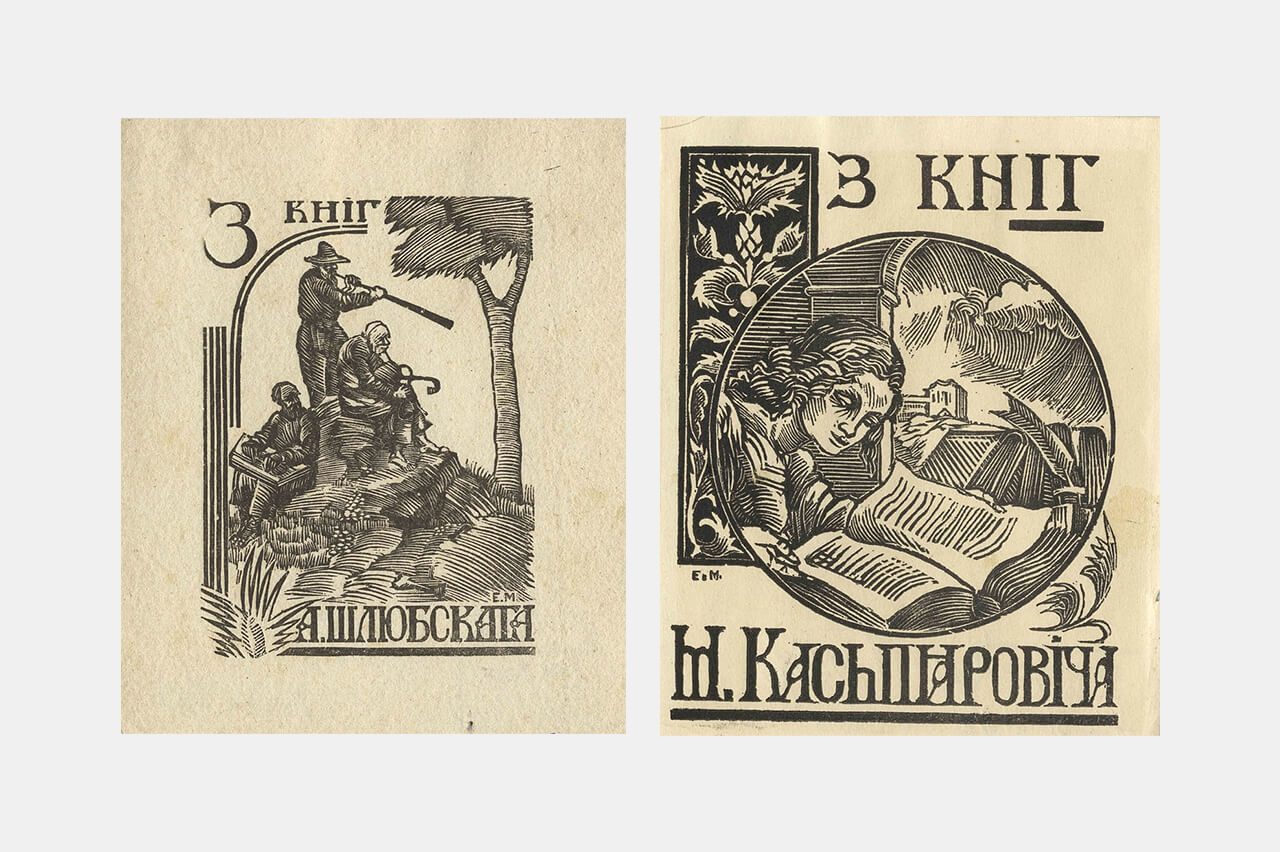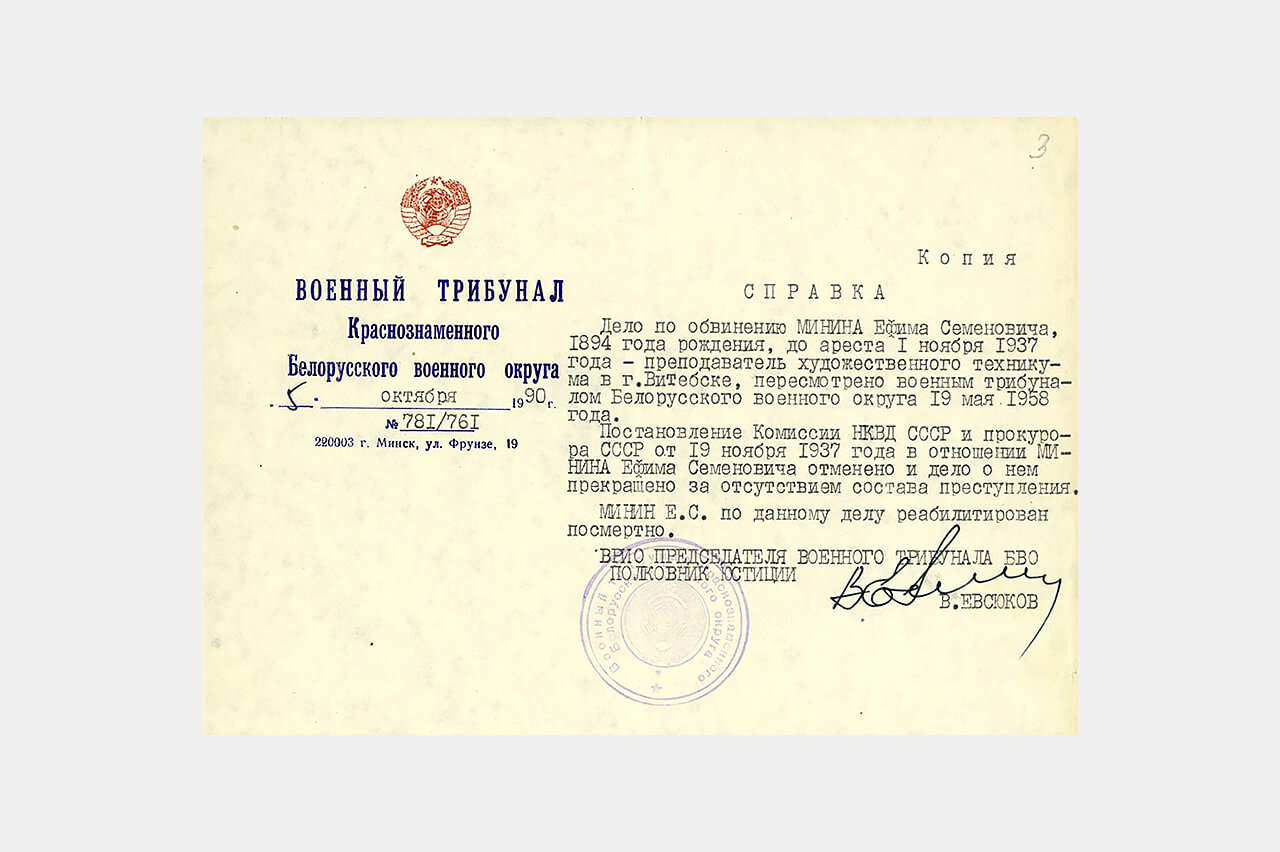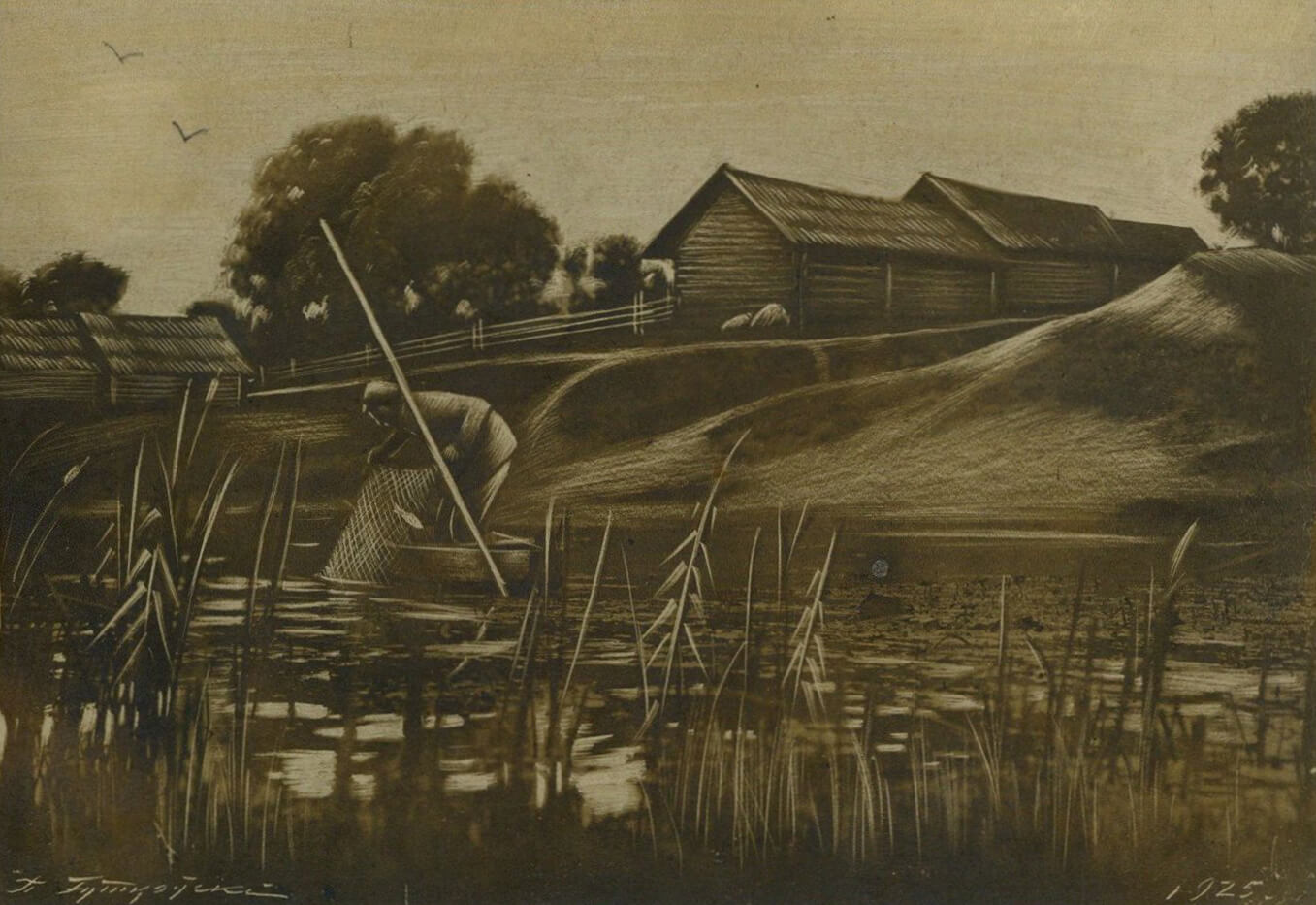Political prisoners of the 1930s. Stories of repressed Belarusian artists
Knowledge | ARTISTS OF THE BELARUSIAN PAST | BELARUS | 30.10.2022
Trying to reflect on the history of Belarusian artistic life, there is a separate topic — the share of authors who were innocently convicted during Stalin’s times. Their fate is a vivid example of how creative self-expression of a person can’t be combined with a system of forcing universal equality, turning the world into a one-color, one-sided reality.
SHARE:

We’ve selected several most famous authors — some of their works have not survived to this day. In fact, we do not even know all those people, whose lives and creative paths were cut short by the repressive machine of the Soviet era:

Yafim Minin
In the history of Belarusian visual arts, Yafim Minin was remembered as the originator of the Ex Libris (also known as bookplate) technique — a graphic work with the name and figurative image of the book's owner.
- Yafim Minin — bookplate of Aliaksandr Šliubski / 1926
- Yafim Minin — bookplate of M. Kaspiarovich / 1925
In addition, the graphic artist worked on the creation of xylographs — engraved images on wood. The works are mainly devoted to the landscape of Viciebsk, the artist's hometown, its surroundings, and monuments of wooden Belarusian architecture. Art critics and ethnographers noted the monumentality and expressiveness of forms and the ability to compose in the artist's works.
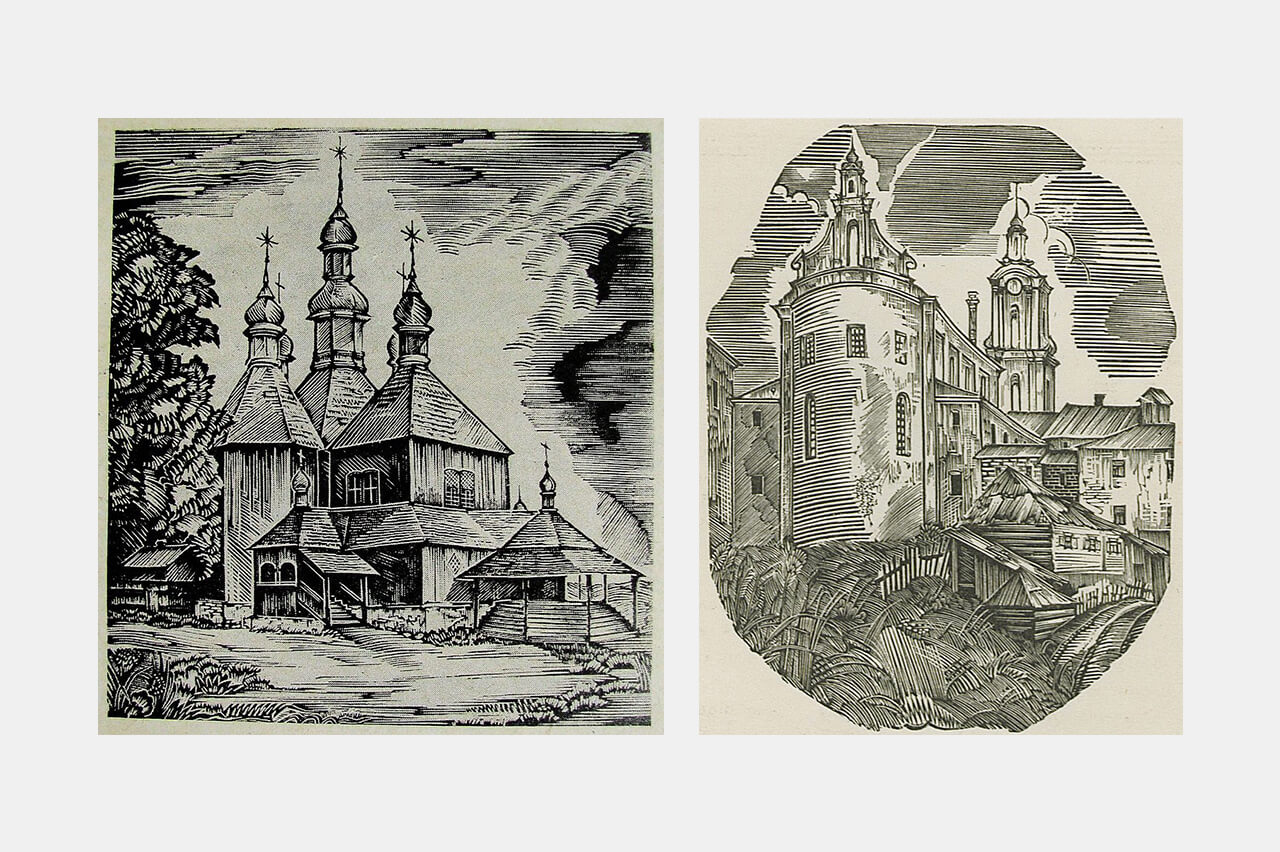


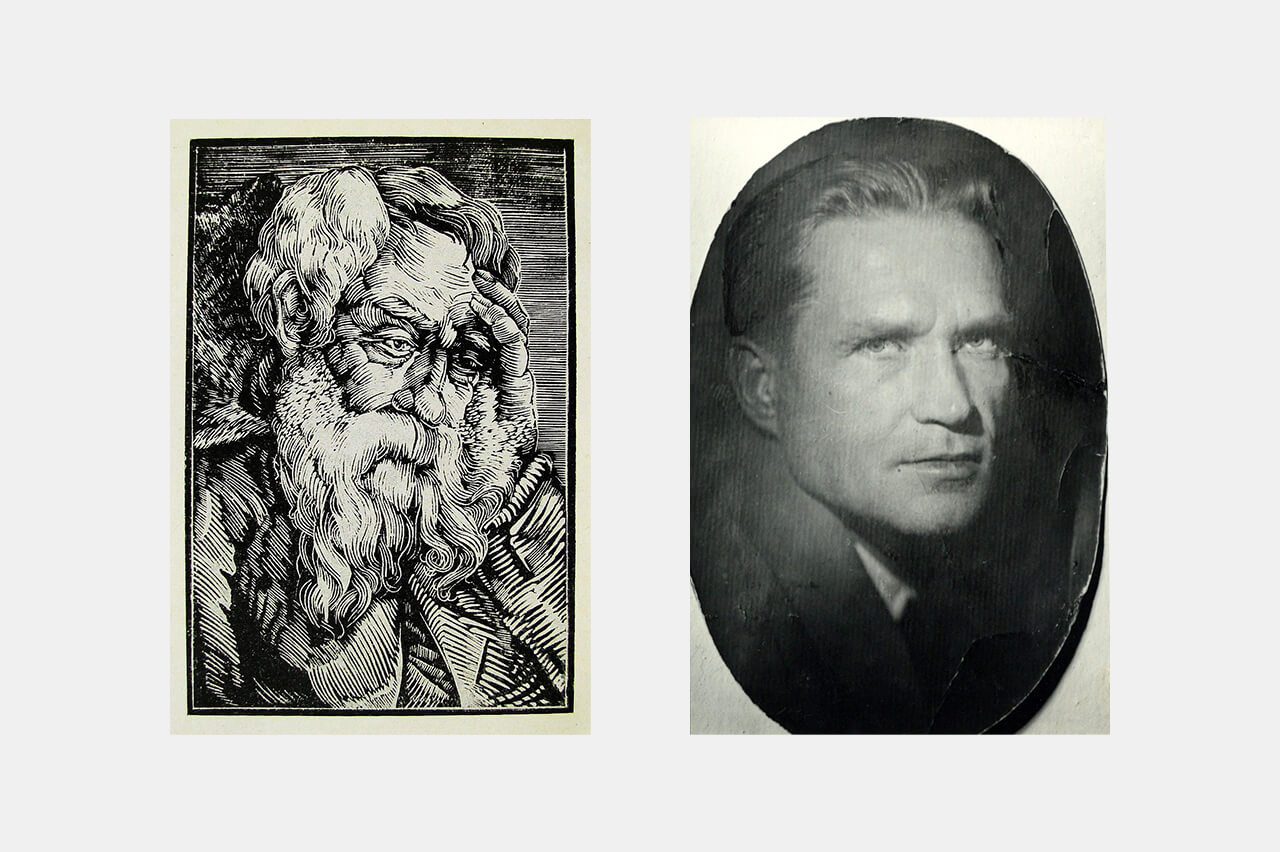
- Yafim Minin — "Ilya Church in Vitebsk"
- Yafim Minin — "Church of St. Anthony of Padua and Bernardine Monastery"
- Yafim Minin — "Pieskavacik, Traietskaya street. Church of the Holy Trinity (Black)"
- Yafim Minin — "Vitba River and Floor"
- Yafim Minin — "City, Market square. Church of the Holy Trinity"
- Yafim Minin. Old man / 1928
- Yafim Minin. Photo from the archive of BDAMLiM
Yafim Minin came from an ancient Old Believer family from Viciebsk. He studied at schools in Vitebsk, then at the Petrograd Institute. Then there was service in the tsarist army, and the Red Army. After demobilisation, he received an art education at the school of the outstanding artist and teacher Yudel Pen in Vitebsk. Minin himself is engaged in teaching, first at the Viciebsk Art-Practical Institute, and then, for the past fourteen years, at the Viciebsk Art School.
The house in which Yafim Minin lived and worked has survived to this day. Some residents of Viciebsk still call it "Minin's House". The photo is from the "Viciebsk Courier" website.
Yafim was arrested on November 1, 1937. Almost three weeks later, on November 19, he was sentenced to death by the Commission of the NKVD of the USSR and the Prosecutor's Office of the USSR, as a figure in the fabricated case of the "Polish Military Organisation". The sentence was executed literally 40 days later, on December 29, 1937. Yefim Minin was only 40 years old. Rehabilitated on May 19, 1958 by the military tribunal of the BVA.
Some of his works were preserved and can be seen in the collections of the National Art Museum of the Republic of Belarus, the Belarusian State Archive-Museum of Literature and Art, and the Viciebsk Regional Museum of Local History.
Information about the rehabilitation of Ya. Minin. Photo from the archive of Belarusian State Archive-Museum of Literature and Art.

Ivan Haŭrys
The life endeavours of Ivan Trafimavič Haŭrys were far from creativity. Coming from a peasant family from the Miensk Region, he took part in the First World War. After the October Revolution he worked as a clerk at the Viciebsk Provincial Military Committee. However, two years later, in 1919, he became a student at the People's Art School founded by Mark Šagal. A year later, Šagal, Malevieč and other artists, including Haŭrys, founded the famous avant-garde association UNOVIS on the basis of this institution.
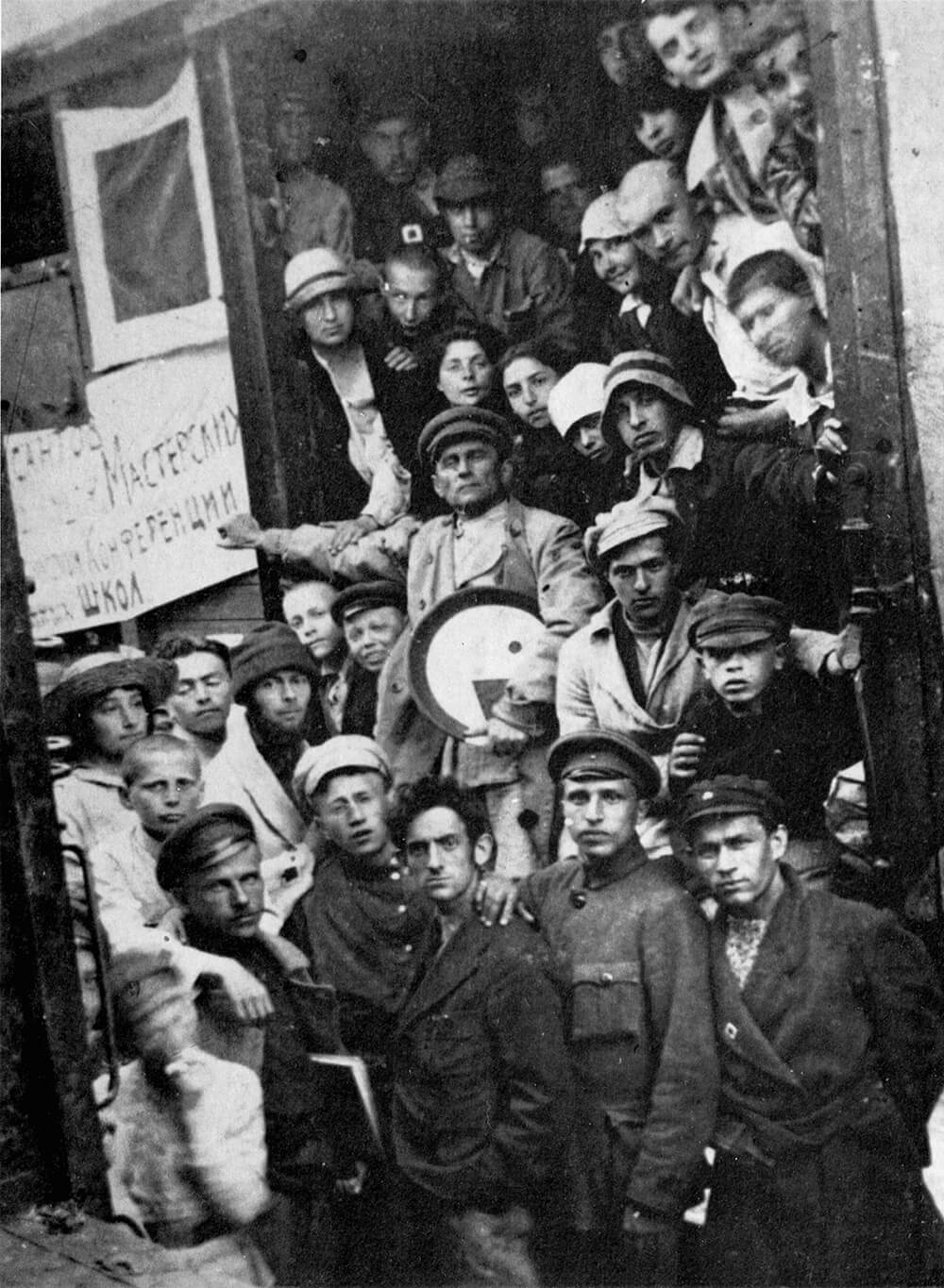
"UNOVIS". Ivan Haŭrys is on the bottom left.
Gradually, the folk art school turned into an art-practical institute, where Haŭrys, still a third-year student, became the vice-rector, and after graduating from the institution in 1922 — the rector of the institute.
However, a year later, the institute was reorganiSed into a technical school, and Haŭrys himself resigned from the post of director. Such events were the result of a negative assessment of the activity of the institute and the new rector of a specially created state commission. Already at that time, "UNOVIS" effectively suspended its existence, Šagal, Malevieč, Jermalajeva, all the institute's graduates, except Gavris, left Viciebsk.
After that, the artist continues teaching, participates in Belarusian art exhibitions. In 1937 he was sentenced to death in the same case of the "Polish Military Organisation". Shot on November 4 of the same year, together with 107 other representatives of the Belarusian inteligencja (meaning: intellectuals).
In 2018, local activists placed signs in memory of the victims, including Ivan Haŭrys, at the scene of the crime, the Uročyšča Chajsy near Minsk.

Memorial cross with a plaque at the place of execution of Ivan Haŭrys / Uročyšča Chajsy, Viciebsk region / 2018. Photo taken from the site "Viciebskaja Viasna"
The artist works in avant-garde genres: cubism, futurism, suprematism. His works are imbued with the influence of his creative mentors: Malevieč, Jermalajeva, and other avant-garde artists.


- Ivan Haŭrys — "Cubist composition with a figure" / 1922 / Photo taken from the website of the newspaper "Kuĺtura"
- Ivan Haŭrys — "Cubist composition" / Early 1920s / Photo taken from the website of the newspaper "Kuĺtura"
- Ivan Haŭrys — "Cubism" / 1921 / Photo taken from vicebskreg.by
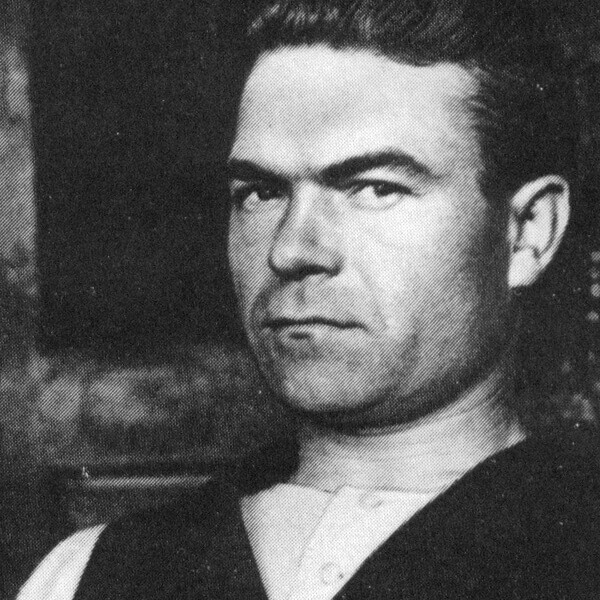
Raman Siemaškievič
A peculiar way of conveying colour, clarity and expressiveness — this is exactly how the first impression is made when reviewing the works of Raman Siemaškievič. The artist’s preferred to dedicate his artwork to the socio-revolutionary direction. In general, it is worth noting the variety of genres of Siemaškievič’s works — portraits, landscape works, peasant and urban subjects.
Выявы i матэрыялы ўзятыя з сайту «Віцебскі кур’ер», архіву БДАМЛіМ, сайту «Віцебская вясна», сайта vicebskreg.by, сайту газеты «Культура»
Перадрук матэрыяла цi фрагментаў магчымы толькі з пісьмовага дазволу рэдакцыі.
Калі вы заўважылі памылку або хочаце прапанаваць дадатак да апублікаваных матэрыялах, просім паведаміць нам.

Raman Siemaškievič — "Tea shop" / 1930s.
His fate left its mark on his bright and expressive work: Siemaškievič, one of the sixteen children of a peasant family from Maladziečna, ends up in a shelter for children from low-income families and orphans. At that time, the shelter was under the patronage of a well-known social and political figure and historian, Adam Stankievič, who will also become a victim of Stalinist repressions in the future. This gives Raman an opportunity to get an art education, the desire for which was noticed in him from the earliest years.
The Belarus-oriented line continues already in the BSSR, in the same Viciebsk Art School; at that time he took part in ethnographic and local history expeditions in Belarus. As the best graduate, the artist finally completed his art education in 1930. After some time, Siemaškievič organises his first personal exhibition, at the same time he becomes a member of the community of artists "Thirteen”.

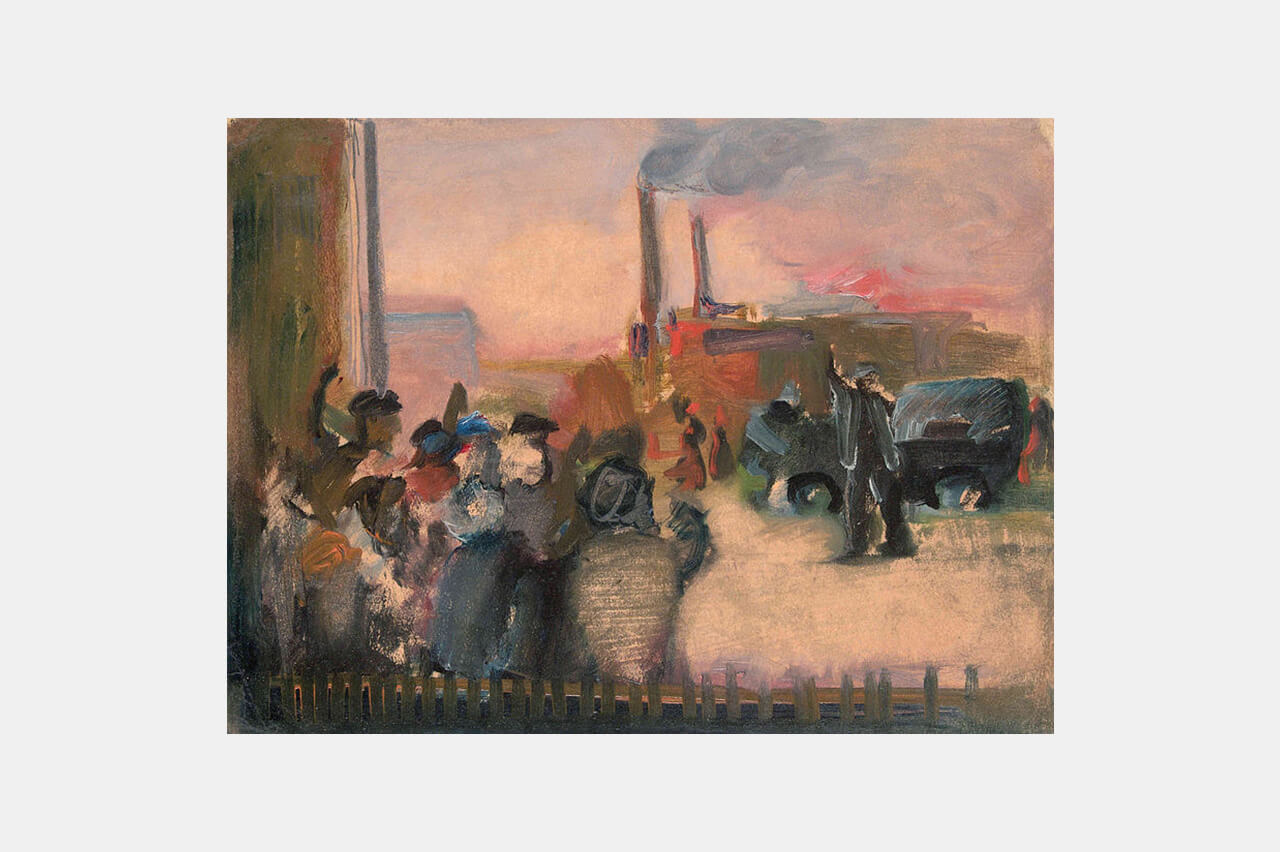
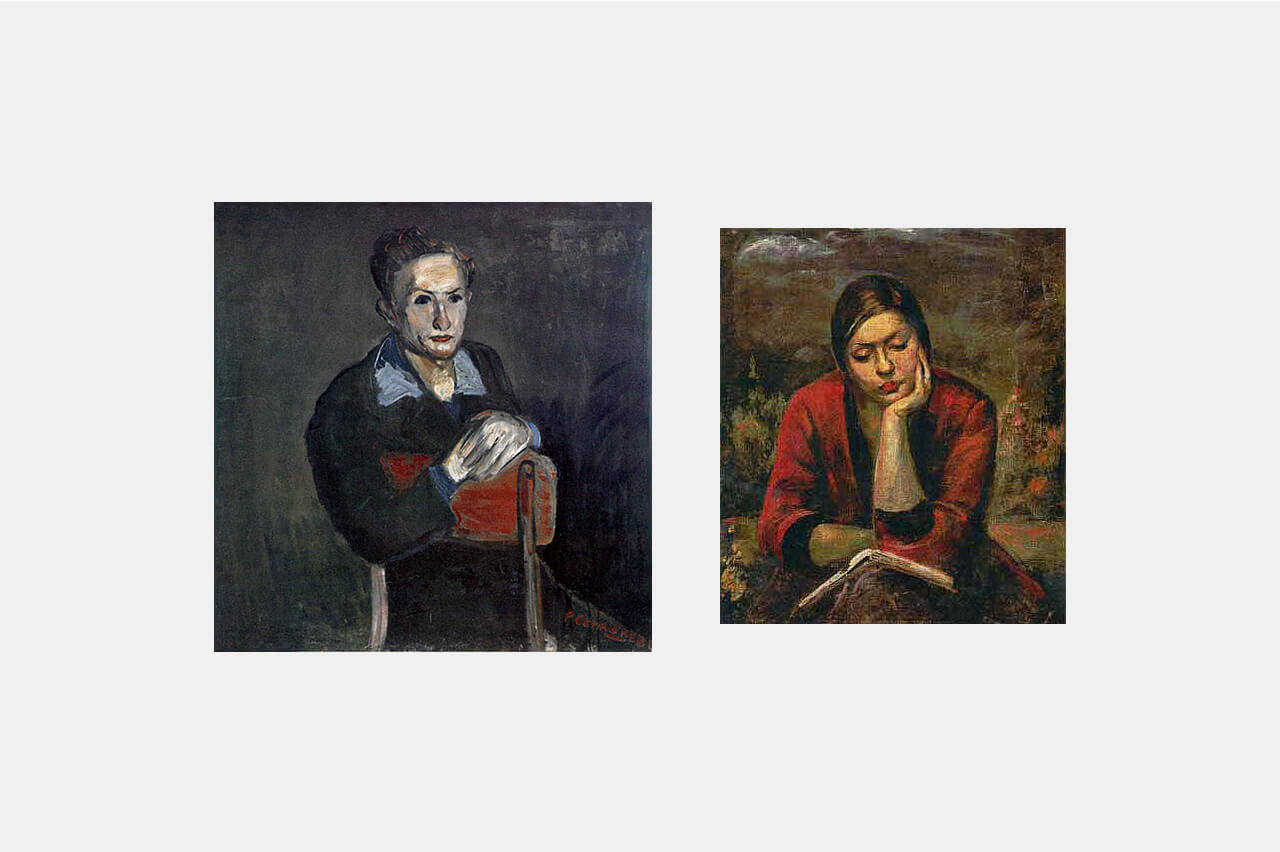
- Raman Siemaškievič — "Landscape with a tree" / 1934
- Raman Siemaškievič — "Horses on pasture" / 1934
- Raman Siemaškievič — "Factory" / 1930s
- Raman Siemaškievič — "Taŭlaj’s portrait / 1930s
- Raman Siemaškievič — "Portrait of N.M. Vasiĺjeva" / 1935
This is the end of the bright streak in the life of Raman Siemaškievič — in 1935 he was arrested for the first time, after his release he was in a difficult financial situation, the artist had to paint on cardboard and pieces of plywood.
Raman Siemaškievič — "Prisoners' Walk" / around 1937
Two years later, he was arrested again on a fabricated case of counter-revolutionary fascist agitation and espionage for the benefit of Poland. A month and a half later, on December 22, 1937, at the age of 37, he was shot at the Butovsky training ground near Moscow. At the time of the arrest, the artist's twenty-four-year-old wife was pregnant, and his works from the studio were confiscated by the NKU staff. He was rehabilitated in 1958.
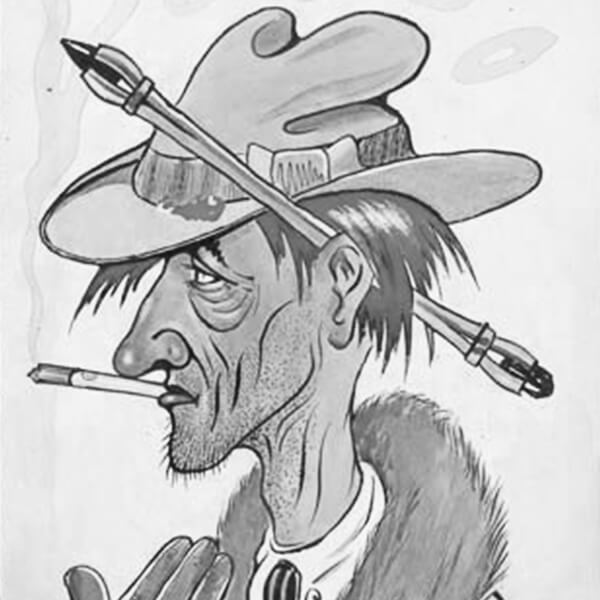
Hienadź Zmudzinski
Being from the North of Russia, Hienadź Zmudzinski carried out his active creative activity precisely in Belarus, having settled in Miensk after serving in the Red Army in 1921.
Hienadź Zmudzinski — Poster / 1921
One of the founders of the school of book graphics in Belarus, he is the author of many illustrations for children's books, school textbooks, posters of state publishing houses. He’s also worked in machine graphics.
Hienadź Zmudzinski — Poster / 1937


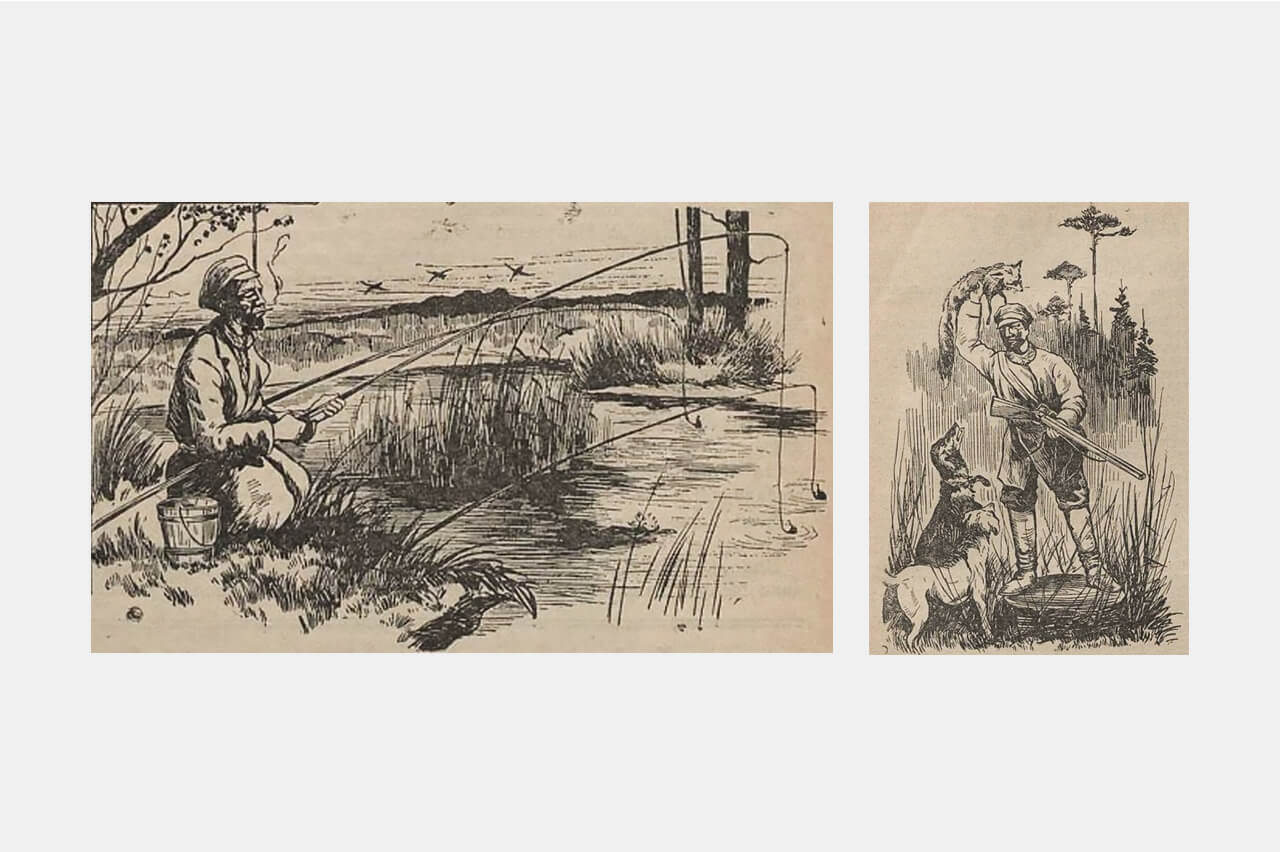
- Hienadź Zmudzinski — Cover of the collection "Dosvitki" by M. Harecky / 1926
- Hienadź Zmudzinski — Illustration for the book by Ya. Vir "Malieńki balahol" / 1928
- Hienadź Zmudzinski — "Hančar" / Photo from the archive of BDAMLiM
- Hienadź Zmudzinski — Untitled / Photo from the archive of BDAMLiM
- Hienadź Zmudzinski — Illustration to M. M. Celieš “Liudzi, zviery, ptachi" / 1930
- Hienadź Zmudzinski — Illustration to M. Tselesh's story "Liudzi, zviery, ptachi" / 1930
On September 20, 1938 he was sentenced to be shot as an "agent of the Polish intelligence bureau”. The sentence was executed after 2 days and he was rehabilitated by the BVA tribunal in 1957.

Paviel Hutkoŭski
Another representative of the genre of Belarusian Ex Libris, Paviel Hutkoŭski was engaged in illustrations for books by Belarusian writers, including Jakub Kolas, Zmitrok Biadulia, and others.
The artist also contributed to scientific activity: as part of an ethnographic expedition to Belarus, Hutkoŭski and other artists and folklorists managed to collect and partially photograph many ancient monuments, find a significant number of wonderful samples of Sluck belts and fabrics.



- Paviel Hutkoŭski — Excerpt from Andrej Alieksandrovič's fantastic story "Paliot u minulaje" / 1924
- Paviel Hutkoŭski — One of the few bookplates that has survived to this day. It was made for the Central Bureau of Local History in 1927
- Paviel Hutkoŭski — Bookplate of Inbelkult / 1926
- Paviel Hutkoŭski — "Poet Michaś Čarot on vacation" / 1924
- Paviel Hutkoŭski — Caricature of Uladzimir Dubovka / 1924
During the war, in order to save his son Nikalaj from punishment for helping the Jews, Hutkoŭski cooperated with the occupying German authorities — he worked as an engraver in the editorial office of German newspapers published in Miensk. This did not become an excuse for the artist — after the liberation of Belarus, he was sentenced for "cooperation with the German authorities during the occupation" to 10 years of correctional labor with confiscation of property. He was released in 1954, and two years later the illegality of the sentence was established by a special commission of the Supreme Court of the BSSR, as a result of which the artist was rehabilitated.
Pavel Gutkovski — Untitled / Photo from the archive of Belarusian State Archive-Museum of Literature and Art

Mark Žytnicki
Belarusian graphic artist of Jewish origin, Mark Žytnicki, after serving in the Red Army, graduated from the Moscow Art Institute, after which he returned to Belarus to work as an editor in the Belarusian State Publishing House, and also to do in book design.





- Mark Žytnicki — «Razvitannie z žonkaj. Pieršaja noč u zniavolienni»
- Mark Žytnicki — «Abviaščennie prysudu. Čalaviekam, jaki sam praz miesiac patrapić u GULAG»
- Mark Žytnicki — «Baraki ŭ pierasyĺnym punkcie. Z uspaminaŭ: Urki (zlodziei, žuliki) biespierapynna napadajuć i adbirajuć pažytki. Žulikam davali adpor. Moj čamadan Krali urki (zlodziei). Skarystalisia pralomam. Ja praz pralom zajšoŭ na nary da urak. Ja chadziŭ ad urki da urku i adbiraŭ svaje rečy»
- Mark Žytnicki — «Lahiernaje žyccio»
- Mark Žytnicki — «Pieratrus u kvatery mastaka. Akramia sliedčaha i paniatoha, u pakoi taksama žonka Žytnickaha, siastra i dačka Lara»
He was arrested in September 1936. On December 17, as a "member of a counter-revolutionary group", he was sentenced by the NKVD to 10 years of correctional labor with confiscation of property. He served his "punishment" in the Uchta-Piačorski concentration camp of the Komi ASSR. He worked in forests, oil fields and gypsum quarries. But even at that time, Žytnicki didn’t stop and created a series of works dedicated to Jews, the victims of Nazism. During the war, his entire family died, except for his daughter, who was welcomed to the family of the writer P. Hlebka.
Three years after his release, he was arrested for the second time and in the same year, 1949, he was sentenced to indefinite exile in the Krasnoyarsk region. He was rehabilitated in 1956.
Then he worked on a series of works dedicated to the victims of both Nazi and Communist terror. His memoirs and work were highly appreciated after his emigration to Israel in 1971. Some of Mark’s preserved works are there.
Unfortunately, now it is almost impossible to find the works of Mark Žytnicki, but the real value is represented by autobiographical sketches, where he, in particular, describes his arrest and life in a Soviet concentration camp.

Mikalaj Vasilieŭski
A distinctive feature of Mikalaj Vasilieŭski's work is his caricatures. The artist exposes the problems of social and national oppression, the policy of the Polish government in Western Belarus. Unfortunately, we were able to find only one of them and it’s dedicated to the problems of the Belarusian school under Polish rule.
He created the cover for the "Belarusian Calendar" in 1929, was involved in the design of books and children's magazines.

- Mikalaj Vasilieŭski — “Bielaruski kaliandar na 1929 hod” cover.
- Mikalaj Vasilieŭski — Caricature “Tavarystva bielaruskaj školy” / Photo from the archive of Belarusian State Archive-Museum of Literature and Art
In general, the realism of Belarusian life, the Belarusian school, attention to national traditions, features of landscapes and folk architecture are noted in the works of Mikalaj Vasilieŭski.
The first time he got arrested was together with his father back in 1920. Mikalaj was sixteen at the time. As a "convict’s family member”, he was sentenced to deportation. After 10 years, he returned to the BSSR, hoping to get an art education and working as a caricaturist in the newspapers. In 1933 he was arrested in the case of the so-called counter-revolutionary organisation "Belarusian National Center" and sentenced to 8 years in prison.
Vasilieŭski served his time in various parts of the USSR, until he was sent to the Solovetsky prison of special purpose, where he was sentenced to death for "counter-revolutionary agitation among the prisoners". Shot three days after the verdict, which happened on February 17, 1938.

Chrystafor Darkievič
Coming from a wealthy peasant family, Chrystafor Darkievič received an excellent art education — he studied at the St. Petersburg Higher Institute of Art and Technology. He is engaged in teaching activities — first at the Petersburg schools, then at the Viciebsk Art School.
He worked on the creation of both landscape paintings and portraits of famous people — Aliaksiej Stachanaŭ, Janka Kupala, Maksim Gorky, and others. He mainly worked in the spheres of monumental and easel painting.
Together with his older brother Piotr, an art critic and art historian, he was shot on November 4, 1961. He was rehabilitated in 1961.

Vasiĺ Sidarovič
In addition to his artistic activities, Sidarovič was an active participant in the communist underground of Western Belarus during the Polish rule. At that time, he graduated from the Viĺnia Art Gymnasium, the studio of Joseph Drazdovich. He imigrated to the USSR in the 1930s, studied at the Viciebsk Art School. After a short time Vasiĺ was sent to Chelyabinsk, where he worked as a stenographer in the theatre. In 1937, the “imigrant and Polish spy" Vasiĺ Sidarovič was shot by the NKVD in 1937. His works did not remain in the public domain.
Sidarovič worked in landscape painting and graphics. The latest works on their topic touched on the problems and realities of the political life of Western Belarus during its stay under Polish rule. His art was published in periodicals of that time.
SHARE:
Similar materials
FOLLOW US
INSTAGRAM TELEGRAM TIKTOK FACEBOOK YOUTUBE
© Chrysalis Mag, 2018-2025
Reprinting of materials or fragments of materials
is allowed only with the written permission

